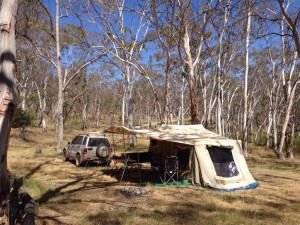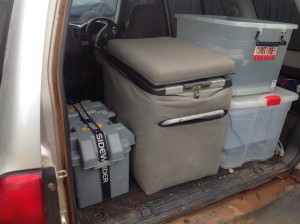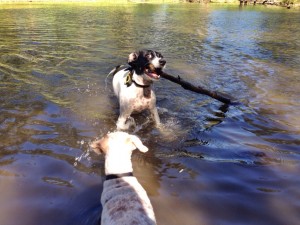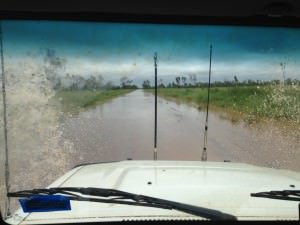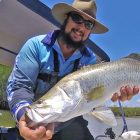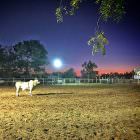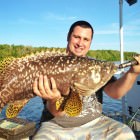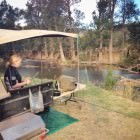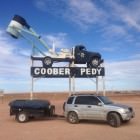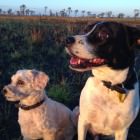5 Things To Consider When Planning Your Big Trip Around Australia
Australia is a huge country, and you could travel your whole life and still not see it all. Jazz and I have spent the last two years living in campgrounds and caravan parks. We have seen so many different set ups in our travels.
There are so many things to consider when planning your big road trip. You are going to make compromises everywhere! I have detailed just a few of the most important ones:
1.) Budget – Some people are happy to keep it simple and cheap by sleeping in swags, and others decide to travel in million dollar motorhomes. You can get a cheap secondhand camper trailer like our one for under 2 grand, but you can pay over 50 grand for a top-of-the-range camper trailer.
The good news is that no matter what setup and budget you have, you will enjoy yourself. You will see other setups and be jealous of some, and others will be jealous of you.
Once you have got your camping setup and vehicle sorted, there are still other major costs to think of. Will you be setup well enough to be able to stay in free camps? Or will you have to pay to stay in powered sites in Caravan Parks? Prices vary dramatically across the country, but you will be paying between $20 and $50 a night to stay in caravan parks. Maybe more in some places.
And fuel. If you are not prepared to pay $2.10+ for a litre of fuel in some places on your travels, then traveling around Australia by vehicle is NOT FOR YOU. These outback fuel stations and roadhouses charge so much because they have to, not because they want to screw you over. A lot of them have to generate their own power, struggle to find staff, and have enormous freight costs. In short, fuel is going to be expensive.
2.) Vehicle and Sleeping – As I touched on above, you could fit a couple of swags in the back of a small hatchback and have a great trip. This is considered “roughing it.” I would recommend a setup no more basic than ours. We have a small four-wheel-drive and tow a small camper trailer. It gives us plenty of space to store gear in the trailer as well as a comfy queen size bed. Setting up a tent and blow up mattress or stretcher each night doesn’t sound like much fun to me.
Towing the camper of course has it’s downfalls as well. It means we can’t tow a boat. Fishing from the bank is all good, but a boat would be preferable. There is always the option of a “roof topper” boat, which has to be very small. It also means having a bigger vehicle to carry it, which will use more fuel and be heavier. Compromises everywhere!
The most common setup by far that you see travelling around the highways of Australia is either a Toyota Landcruiser or Nissan Patrol towing a caravan.
We’ve seen some insane setups, like a massive motorhome, towing a gigantic trailer that had a Toyota RAV4 on it, a boat on a trailer, a quad bike and two scooters! This was obviously someone that was not willing to compromise.
3.) Power – Sure, you could travel without any form of power setup. You would have to buy ice every few days to keep beer cold (and food I guess) and buy batteries to run lights and torches. But if you are spending an extended amount of time driving around Australia, then this would be completely inadequate.
Our personal power setup consists of a 120AH deep cycle battery, a battery charger, a 1KVA Honda generator and two inverters. The battery runs most things. The fridge, the lights and mobile device chargers. The most common way for us to keep the battery charged is buy the car while we are driving during the day. If we are setup somewhere for several days, then we need to charge the battery by other means. Thats when we use the Honda Gennie and Battery Charger. We used to have a cheap Ryobi Generator, but once we started using it every day, it died after about 2 weeks. You simply MUST buy a good quality generator like a Honda.
We have friends that have been on the road for 18 months touring around Australia and they do not have a gennie. They do have a couple of solar panels though. Modern camping fridges like Engel’s, EvaCool and Waeco draw very little power. With a good battery, their solar panels keep their fridge and lights running indefinitely.
A lot of people travelling in caravans have both solar panels and a gennie. They tend to have more electrical devices, so they use more power. So the solar panels trickle charge during the day, then the gennie might get used for just a couple of hours a day to keep the batteries charged right up.
You could of course stay in powered sites in caravan parks to get your power. But caravan parks can get crowded, expensive and restrictive (eg pets).
4.) Traveling with pets – We simply wouldn’t travel without our two dogs. It’s a big decision weather to travel with pets or not, because you will be restricted on many places you can and can’t go. National Parks for example are a NO-GO-ZONE for pets.
If you wanted to have a night staying at a motel for a change, you can’t. Doing some shopping or having some beers at an outback pub can be restrictive too. Although, we find that many of the outback pubs we go to have a balcony to sit on outside, and we can tie up the dogs somewhere near us off the balcony.
Because we have the dogs in the car with us, it means we stop every hour or so to let them get out, stretch their legs and do a wee. But this gives us an opportunity to explore many places, even if it’s just for a quick stop.
Even though there are a few hassles, we always find dog friendly camp areas and caravan parks everywhere we go.
5.) Time Of Year – You need to consider where you want to travel at what time of year. You wouldn’t drive to the Northern Territory between December and March for example. This is the wet season. Firstly, it is stinking hot with 100% humidity. Secondly flash flooding occurs all over the NT during the wet. You know the thousands of “FLOODWAY” signs you drive past on highways? They can turn into rivers during the wet season. During the wet you will also be restricted to bitumen roads. Even the most decked out four-wheel-drive couldn’t drive the Savannah Way in the middle of the wet.
The time to head North is in Winter. The days are beautiful in the NT during Winter with low humidity. In Summer, head somewhere out of the tropics, away from cyclones. Why not tour Tasmania this Summer?

